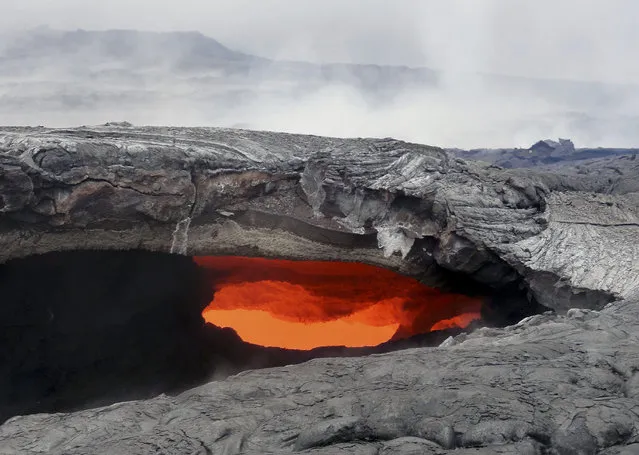
This August 12, 2014 photo released by the U.S. Geological Survey shows a fluid lava stream within the main tube of the June 27 lava flow from the Kilauea volcano Pahoa, Hawaii. The June 27 lava flow, named for the date it began erupting from a new vent, isn't an immediate threat to homes or structures downhill of the flow, but could become one in weeks or months if it continues to advance, the U.S. Geographical Survey's Hawaiian Volcano Observatory said. (Photo by AP Photo/U.S. Geological Survey)
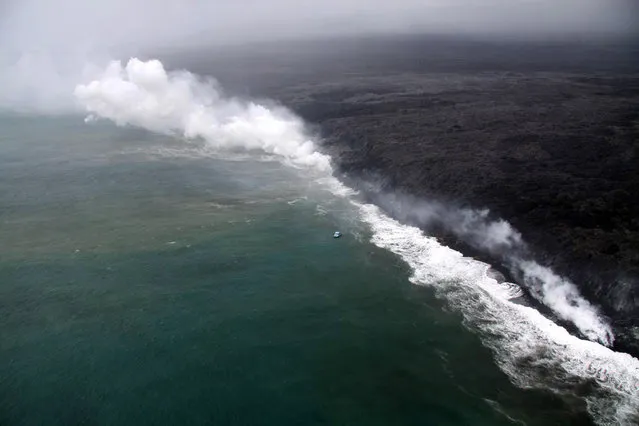
In this December 27, 2011 photo provided by the U.S. Geological Survey, Lava flows in to the ocean at West Ka‘ili‘ili in in Hawaii Volcanoes National Park. Hawaii County Civil Defense Acting Administrator John Drummond says the lava at Kilauea isn't threatening homes or structures but steam is blasting from the point where it reaches the sea along the coast. (Photo by AP Photo/U.S. Geological Survey)
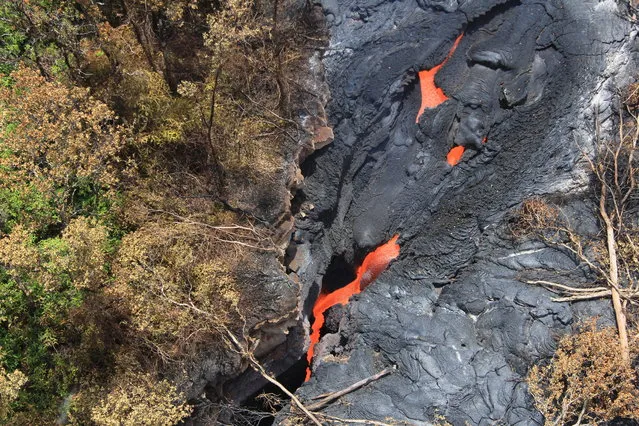
In this September 1, 2014 photo released by the U.S. Geological Survey, fluid lava streams from the June 27 lava flow from the Kilauea volcano in Pahoa, Hawaii. The June 27 lava flow is named for the date it began erupting from a new vent. The Hawaiian Volcano Observatory issued a warning Thursday, September 4, 2014 to a rural community in the path of a lava flow on Hawaii's Big Island, as the molten rock moved to within a mile of homes. Observatory scientists said lava from the Kilauea volcano could reach the Kaohe Homesteads in five to seven days if it continues advancing through cracks in the earth. (Photo by AP Photo/U.S. Geological Survey)
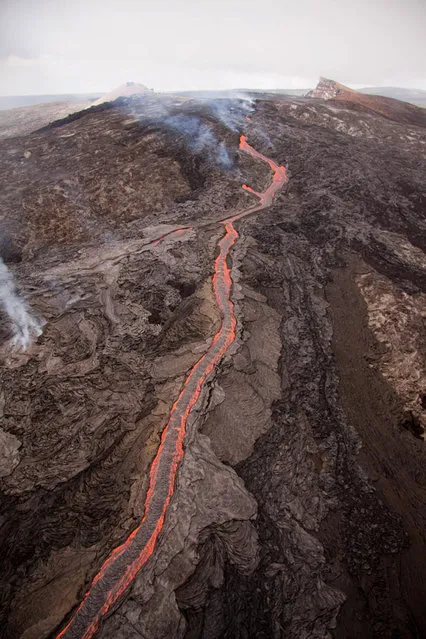
In this September 21, 2011 photo provided by the U.S. Geological Survey, lava flows from Kilauea volcano at Volcanoes National Park in Hawaii. Lava began flowing from the fissure breakout that started last week at Kilauea, a volcano that has been continuously erupting since 1983. It advanced about 2.3 miles before stopping short of the mostly abandoned Royal Gardens subdivision. (Photo by Tim Orr/AP Photo/USGS)
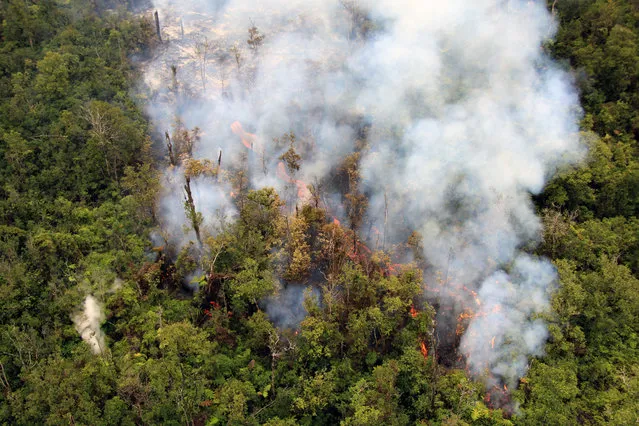
In this September 3, 2014 photo released by the U.S. Geological Survey, fluid lava streams from the June 27 lava flow from the Kilauea volcano in Pahoa, Hawaii. (Photo by AP Photo/U.S. Geological Survey)
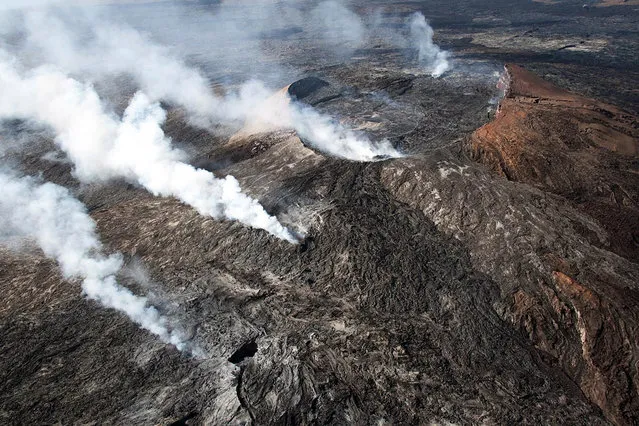
In this Wednesday, December 6, 2011 photo provided by US Geological Survey, fumes from Puu Oo crater are seen on Kilauea Volcano in Hawaii. Lava from the Big Island's Puu Oo crater is flowing toward the ocean. Hawaiian Volcano Observatory spokeswoman Janet Babb tells the Honolulu Star-Advertiser the flow was about 1.5 miles from the ocean. (Photo by AP Photo/U.S. Geological Survey)
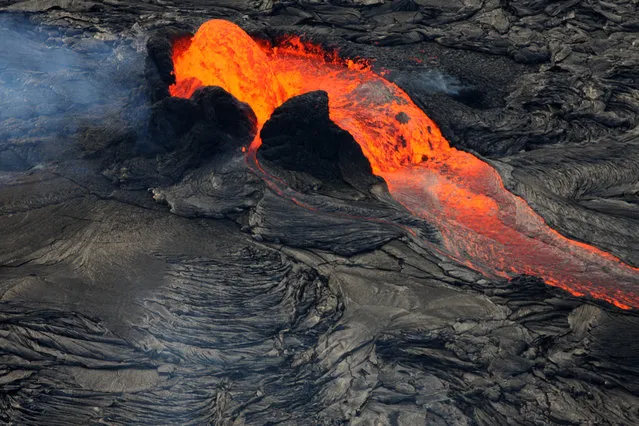
A fountain of lava erupts from Hawaii's Kilauea volcano's Tuesday, July 8, 2008. In the latest activity fountains of red-hot lava spew up to 30 feet high, but the flow into the sea has once again slowed to a trickle according to the Hawaiian Volcano Observatory. (Photo by Tim Wright/AP Photo)
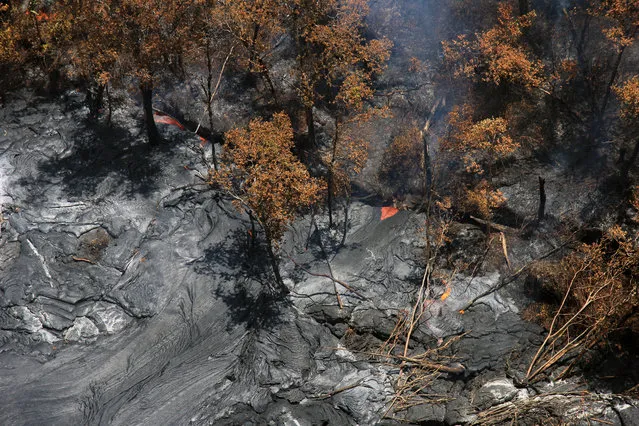
In this August 29, 2014 photo released by the U.S. Geological Survey, fluid lava streams from the June 27 lava flow from the Kilauea volcano in Pahoa, Hawaii. (Photo by AP Photo/U.S. Geological Survey)
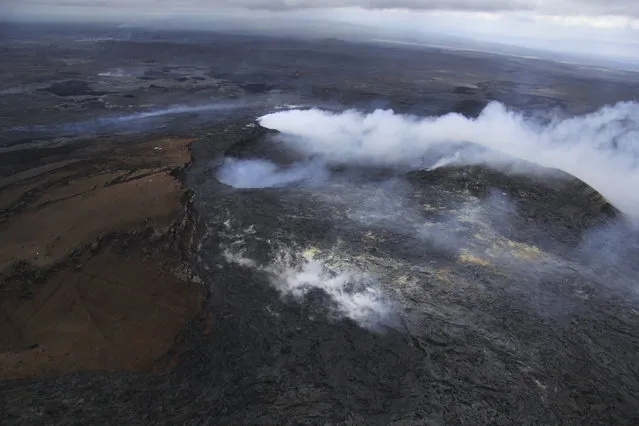
This August 22, 2014 photo released by the U.S. Geological Survey shows the Pu'u 'O'o crater of the Kilauea volcano partially obscured by thick fume from the June 27 lava flow near Pahoa, Hawaii. (Photo by Tim Orr/AP Photo/U.S. Geological Survey)
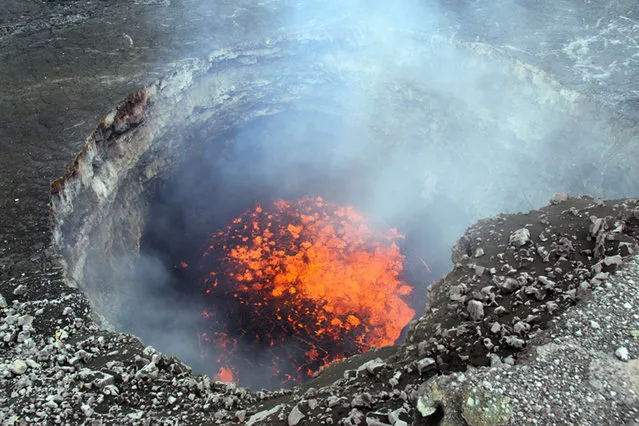
In this February 14, 2011 photo provided by Hawaii Volcano Observatory, a churning lava lake at Kilauea's summit is seen at Hawaii Volcanoes National Park, Hawaii. (Photo by AP Photo/Hawaii Volcano Observatory)
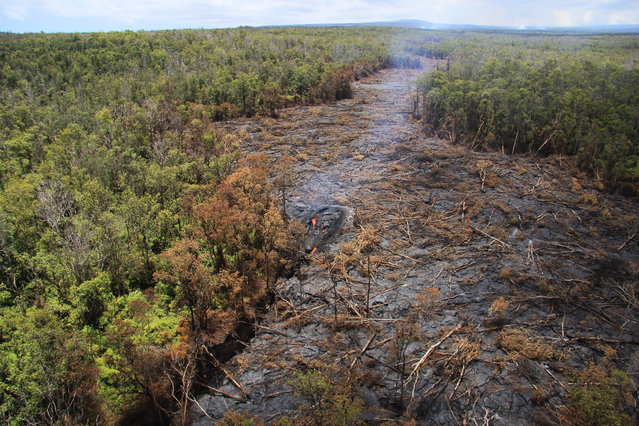
In this September 1, 2014 photo released by the U.S. Geological Survey, fluid lava streams from the June 27 lava flow from the Kilauea volcano in Pahoa, Hawaii. The June 27 lava flow is named for the date it began erupting from a new vent. The Hawaiian Volcano Observatory issued a warning Thursday, September 4, 2014 to a rural community in the path of a lava flow on Hawaii's Big Island, as the molten rock moved to within a mile of homes. Observatory scientists said lava from the Kilauea volcano could reach the Kaohe Homesteads in five to seven days if it continues advancing through cracks in the earth. (Photo by AP Photo/U.S. Geological Survey)
07 Sep 2014 12:47:00,
post received
0 comments
